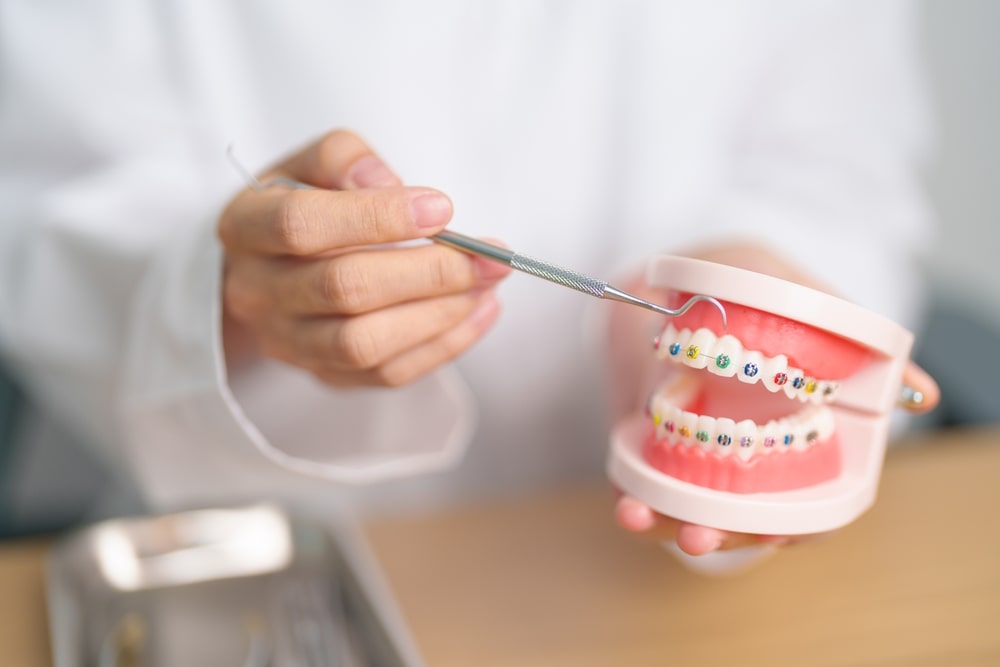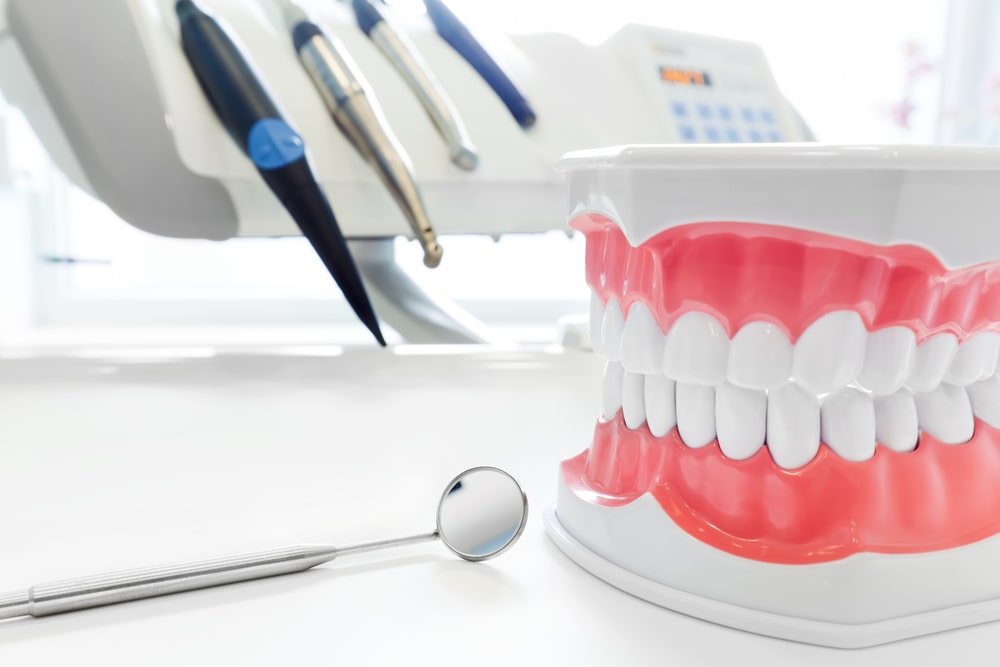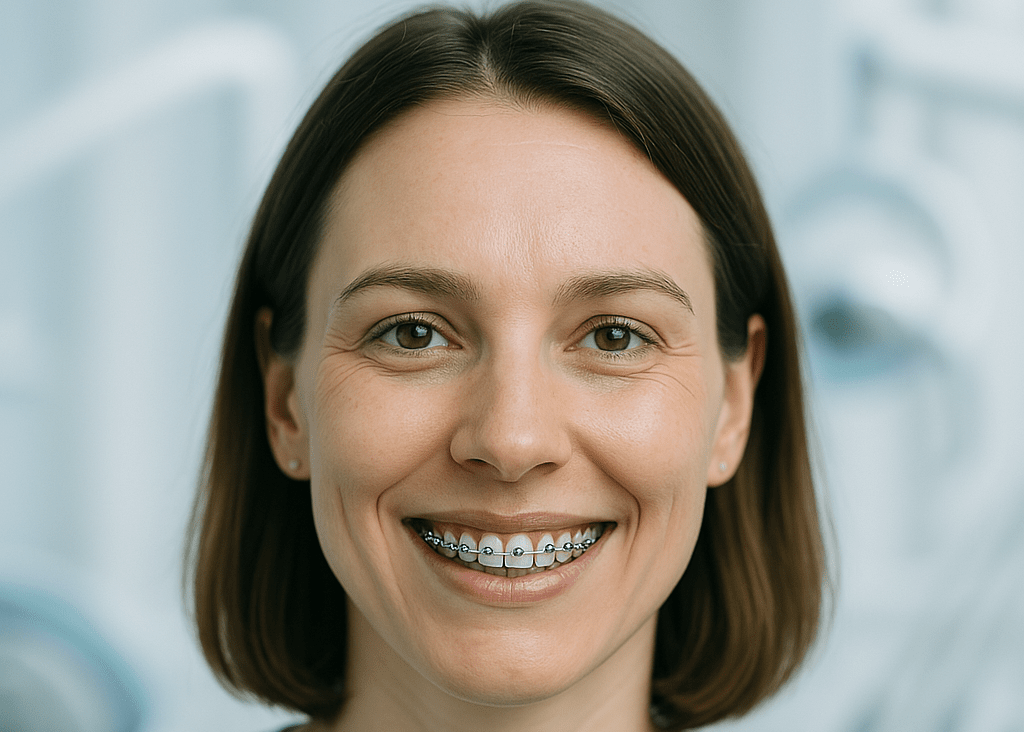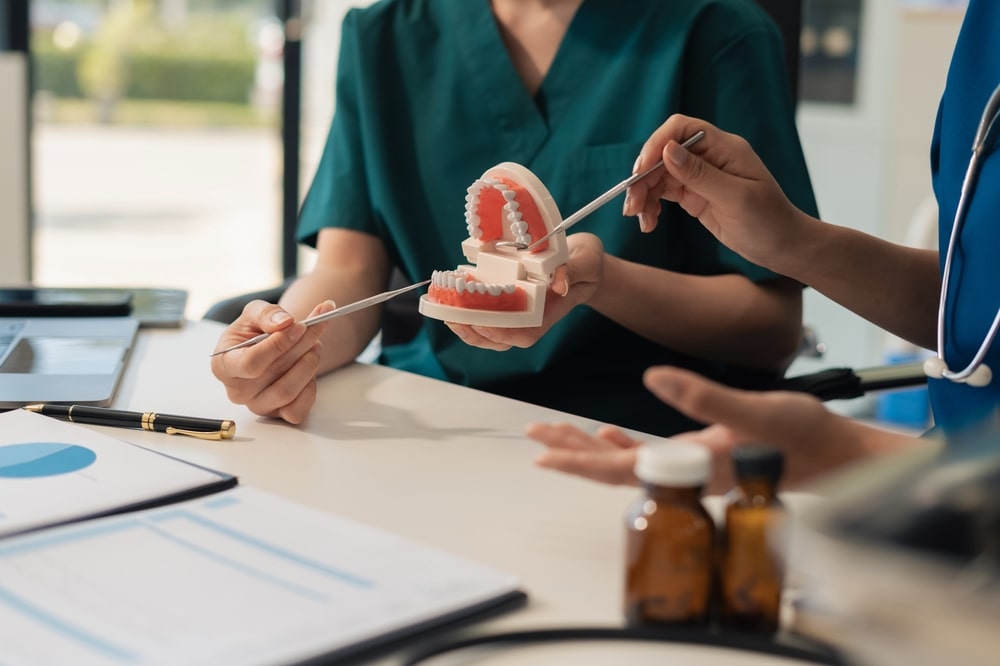Achieving a beautifully aligned smile takes time, and traditional orthodontic treatment can often span one to three years or even longer depending on the complexity of the case. For many, the prospect of a shorter treatment duration is highly appealing. This desire has led to the development of methods aimed at potentially speeding up the tooth movement process, collectively known as accelerated orthodontics.
But what exactly is accelerated orthodontics, how does it work, and is it the right option for you? Let’s explore.
What is Accelerated Orthodontics?
Accelerated orthodontics refers to techniques or devices used in conjunction with traditional braces or clear aligners (like Invisalign) to potentially reduce the overall treatment time required to straighten teeth.
It’s important to understand that these are typically adjuncts or supplementary methods, not standalone treatments that replace the need for braces or aligners themselves.
The goal is to encourage teeth to move more quickly and efficiently through the bone structure, thereby potentially shortening the time you spend in orthodontic hardware.
How Does it Work? The Science of Orthodontics
Tooth movement during orthodontics relies on a natural biological process called bone remodeling.
When pressure is applied to a tooth (by braces or aligners), it creates areas of tension and compression in the surrounding bone.

This triggers specialized cells – osteoclasts to break down bone in areas of compression, and osteoblasts to build new bone in areas of tension.
This controlled breakdown and buildup allows the tooth to gradually move through the jawbone.
Accelerated orthodontic techniques aim to stimulate this bone remodeling process to happen at a faster rate.
Two main approaches are commonly used:
- Micro-Osteoperforations: This involves creating tiny, controlled perforations in the bone around the teeth that need to move. This minor trauma triggers a localized healing response called the Regional Acceleratory Phenomenon (RAP). Think of it like stimulating the bone just enough to make it more receptive to tooth movement, increasing cellular activity and blood flow in the area.
- Vibrational Stimulation: Devices using high-frequency vibrations are designed to be used daily at home. The idea is that these vibrations can also stimulate cellular activity within the bone and surrounding tissues, potentially promoting faster bone remodeling and aiding tooth movement.
By encouraging the bone to remodel more quickly, these methods theoretically allow the orthodontist to make adjustments (tighten braces or switch aligners) more frequently or achieve desired movements in less time.
Popular Accelerated Orthodontics Methods
While several techniques exist, two of the more commonly discussed accelerated methods are Propel and AcceleDent.
Propel:
How it works: Propel utilizes the micro-osteoperforation technique.
Using a specialized, minimally invasive device, the orthodontist creates several small, shallow dimples in the gum and bone tissue around specific teeth or areas that are resistant to movement or need faster movement.
This is usually done during a regular office visit after numbing the area.
- Pros: Targets specific areas, performed by the orthodontist, often requires only one or a few sessions throughout treatment.
- Cons: It is a clinical procedure involving minor invasiveness.
- Cost: Can range from several hundred to over a thousand dollars, depending on the number of sites treated.
AcceleDent:
How it works: AcceleDent is a hands-free device used by the patient at home. It consists of a mouthpiece fitted around the braces or aligners, connected to a small activator. When turned on, it delivers gentle vibrations.
Patients are typically instructed to use it for about 20 minutes per day.
- Pros: Non-invasive, used conveniently at home, requires minimal office time, some patients report reduced discomfort.
- Cons: Requires patient compliance (remembering to use it daily), and the scientific evidence on its efficacy in significantly accelerating treatment time is mixed.
- Cost: Ranges typically from $700 to $1,900, though some sources cite slightly lower ranges. Find out more on cost of dentistry and insurance in Canada.
Benefits of Speeding Up Treatment
The primary benefit of accelerated orthodontics is the potential to reduce the overall duration of your smile transformation journey.

This can be particularly appealing for individuals who want to achieve their desired results for a specific event or simply wish to complete orthodontic treatment for children.
A shorter treatment time can also mean fewer overall appointments.
Potential Disadvantages and Risks
As with any medical procedure or adjunct therapy, there are considerations:
- Cost: Accelerated methods add an extra expense to the overall orthodontic treatment cost, typically ranging from $2,000 to $6,000+ as an add-on. This is generally not covered by dental insurance, as it’s considered elective.
- Discomfort: While some devices like AcceleDent may help reduce discomfort, the initial application of methods like Propel can cause temporary soreness or tenderness.
- Efficacy: It’s important to have realistic expectations. While many clinics promote significant time savings, some scientific studies have shown mixed or less dramatic reductions in treatment time compared to traditional methods alone. The degree of acceleration can vary significantly from person to person.
- Compliance: Devices like AcceleDent require daily patient compliance to be potentially effective.
Your orthodontist will discuss any specific risks associated with the chosen method during your consultation.
Is Accelerated Orthodontics Right for You? (Suitability)
Accelerated orthodontics isn’t suitable or necessary for everyone.
Determining if you are a good candidate requires a thorough evaluation by an experienced orthodontist. Factors they will consider include:
- Severity of your case: Accelerated methods may be more effective for mild to moderate cases rather than very severe malocclusions.
- Overall oral health: Healthy gums and bone are crucial. Active gum disease or poor oral hygiene may make accelerated methods less suitable.
- Age: While bone remodeling occurs at all ages, individual response can vary.
- Treatment goals: How much faster are you realistically hoping to finish? Is the added cost and potential effort worthwhile for your specific goals?
- Lifestyle: For at-home devices like AcceleDent, your ability to be consistently compliant is key.
Individuals with certain medical conditions or those who smoke may not be ideal candidates. Your orthodontist will assess your unique situation and provide personalized advice.
Setting Realistic Expectations
While the promise of a faster smile is exciting, it’s vital to manage expectations.
Accelerated orthodontics can be a valuable tool, but it doesn’t guarantee a drastically shorter treatment for everyone.

The degree of acceleration achieved can vary based on individual biology, the complexity of the case, and your compliance with the overall treatment plan (including wearing aligners/elastics as instructed).
Regardless of how quickly teeth move, wearing your retainer diligently after treatment is still essential to maintain your results for a lifetime.
Conclusion: Choosing the Right Orthodontic Treatment Plan
Accelerated orthodontics offers promising methods to potentially speed up the journey to a straighter smile. Techniques like Propel and devices like AcceleDent work by stimulating the bone remodeling process, allowing for faster tooth movement. While these options can be appealing for patients seeking quicker results, they come with additional costs and require careful consideration of their potential benefits and limitations. Choosing the right orthodontic treatment plan, including whether to incorporate accelerated methods, is a personal decision best made in consultation with a qualified orthodontist.
They can assess your specific needs, discuss the most suitable options (whether traditional or accelerated), explain the science and realistic expectations, and help you embark on the most effective path to your dream smile.
FAQs About Accelerated Orthodontics
Q: How much does accelerated orthodontics cost?
A: Accelerated methods like Propel or AcceleDent are typically add-ons to standard orthodontic treatment and can cost anywhere from approximately $700 to over $2,000 for specific devices like AcceleDent or Propel, or an overall added cost ranging from $2,000 to $6,000+ for the acceleration component depending on the method and extent used (drjacquiesmiles.com, bauersmiles.com). This is usually in addition to the base cost of braces or aligners.
Q: Is accelerated orthodontics covered by insurance?
A: Generally, accelerated orthodontic methods are considered elective and are typically not covered by most dental insurance plans. It is always best to check with your specific insurance provider and discuss payment options with your dental clinic (downtowndentistry.com).
Q: How much time can accelerated orthodontics really save?
A: The amount of time saved varies greatly depending on the individual case, the chosen method, and patient compliance. While some clinics report potential time savings of 30-50%, it’s crucial to have realistic expectations. Some scientific studies show less significant time reductions than often marketed. Your orthodontist can give you a more personalized estimate based on your specific treatment plan (stosichconsulting.com).
Q: Is accelerated orthodontics painful?
A: Procedures like Propel involve minimal discomfort managed with numbing, though temporary soreness afterwards is possible. Devices like AcceleDent are designed to be gentle, with some patients even reporting a reduction in the discomfort associated with regular tooth movement (drgarrickfwong.com).
Q: Does accelerated orthodontics work for everyone?
A: No, it is not suitable for every patient or every case. Factors like the complexity of tooth movement required, the patient’s oral health, age, and compliance are all considered by the orthodontist when determining suitability. A consultation is necessary to see if you are a candidate.




